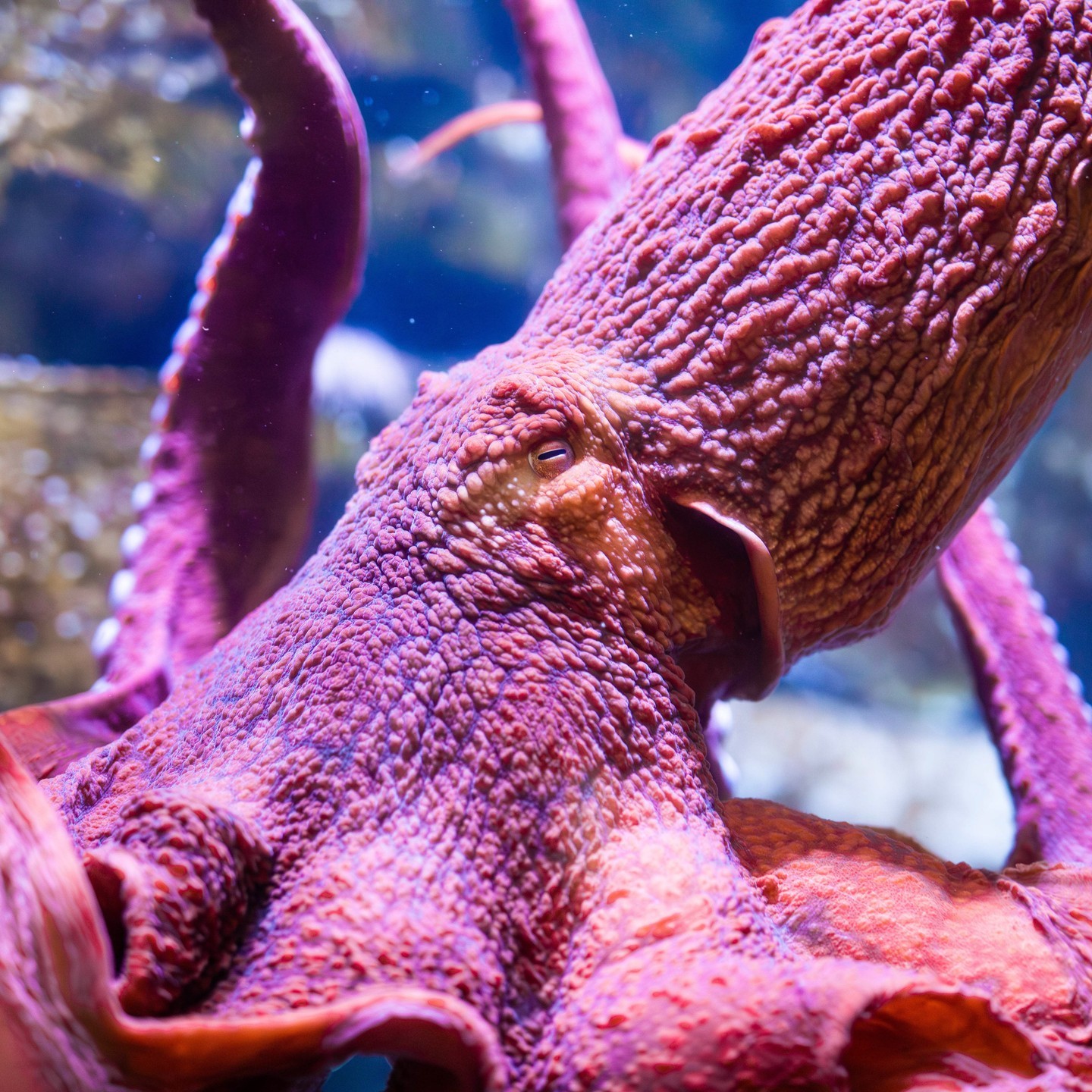Hey there, ocean enthusiasts! Today, we will dive into the mysterious world of a truly remarkable creature – the Giant Pacific Octopus. So, buckle up and join me as we explore the fascinating life of this eight-armed wonder.
First off, let’s address the, well, giant in the room. The Giant Pacific Octopus (Enteroctopus dofleini) is, you guessed it, the largest octopus species on the planet. Weighing in at a whopping 110 pounds and boasting an arm span of up to 16 feet, these cephalopod champions could give any heavyweight a run for their money.
But don’t let their size intimidate you – these underwater wizards are more intelligent than they look. Did you know they’re considered one of the most intelligent invertebrates around? With a donut-shaped brain (talk about deliciously bright), they can solve puzzles, open jars, and even escape their tanks for food or a little aquatic adventure.
Speaking of food, Giant Pacific Octopuses are stealthy hunters with a taste for the finer things in life. Their menu includes everything from crabs and lobsters to clams and fish. But how do they catch their prey? It’s all in the suckers! Each of their eight arms has hundreds of suckers that help them taste, smell, and grasp and manipulate objects quickly.
If you think these octopuses are fascinating during the day, wait until you hear about their nightlife. They’re masters of disguise, using their incredible chromatophores – specialized pigment-containing cells – to change color and texture in the blink of an eye. This camouflage helps them blend in with their surroundings, making them almost invisible to predators and prey.
As if that wasn’t impressive enough, Giant Pacific Octopuses have a few more tricks up their sleeves (or should I say arms?). They’re known for their fantastic ability to regenerate lost limbs. That’s right – if they lose a component to a predator or accident, they can grow a brand new one in just a few months!
If you’re wondering about their love lives, it’s a bittersweet affair. After a male octopus transfers a sperm packet to the female using a specialized arm, his days are numbered. Males die shortly after mating, while females lay up to 100,000 eggs and guard them devotedly. Sadly, the female octopus will also pass away once her eggs hatch.
As we end our journey, it’s clear that the Giant Pacific Octopus is a true marvel of the ocean world. Their intelligence, adaptability, and mysterious ways make them a captivating subject for researchers and animal lovers alike.
So, the next time you find yourself near an aquarium, don’t miss the chance to witness the enchanting dance of the Giant Pacific Octopus. You never know – you might leave with an eight-armed friend forever inked in your heart.
Happy exploring, friends!


